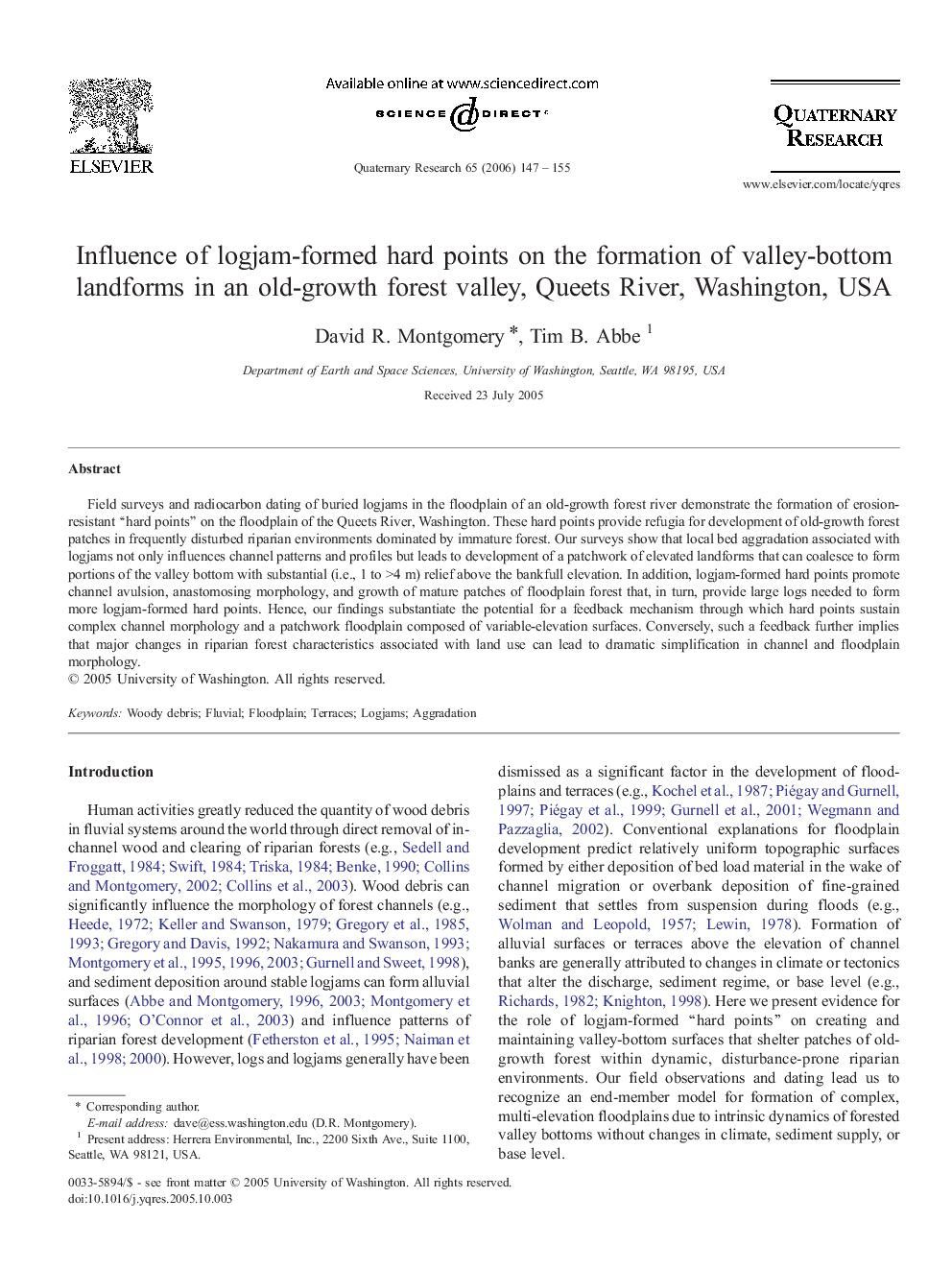| Article ID | Journal | Published Year | Pages | File Type |
|---|---|---|---|---|
| 1045766 | Quaternary Research | 2006 | 9 Pages |
Field surveys and radiocarbon dating of buried logjams in the floodplain of an old-growth forest river demonstrate the formation of erosion-resistant “hard points” on the floodplain of the Queets River, Washington. These hard points provide refugia for development of old-growth forest patches in frequently disturbed riparian environments dominated by immature forest. Our surveys show that local bed aggradation associated with logjams not only influences channel patterns and profiles but leads to development of a patchwork of elevated landforms that can coalesce to form portions of the valley bottom with substantial (i.e., 1 to >4 m) relief above the bankfull elevation. In addition, logjam-formed hard points promote channel avulsion, anastomosing morphology, and growth of mature patches of floodplain forest that, in turn, provide large logs needed to form more logjam-formed hard points. Hence, our findings substantiate the potential for a feedback mechanism through which hard points sustain complex channel morphology and a patchwork floodplain composed of variable-elevation surfaces. Conversely, such a feedback further implies that major changes in riparian forest characteristics associated with land use can lead to dramatic simplification in channel and floodplain morphology.
